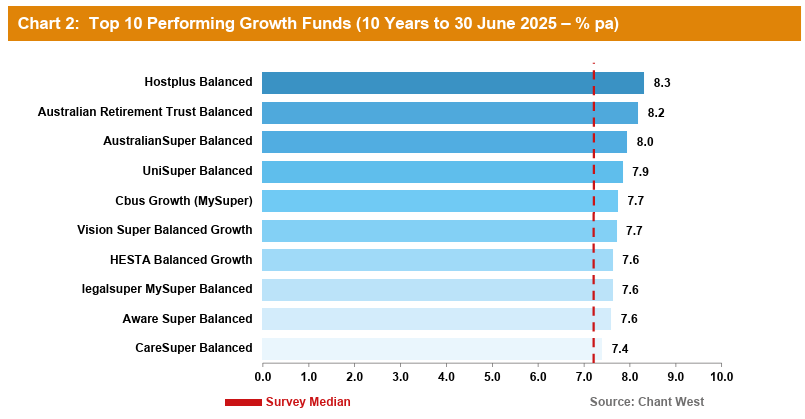3 changes that helped my super grow faster
In early 2009, after a gruelling year covering the global financial crisis in my first job as a business reporter, I escaped to Byron Bay for a short break. But any calm I found vanished the moment I got home and opened a letter from my super fund.
The news was brutal.
While the median balanced fund lost 19.5% in 2008, according to SuperRatings, the option my employer had placed me in - run by a Big Four bank - slumped 24.5%. Its long-term record was equally unimpressive. As I quickly discovered, it ranked in the industry’s bottom quartile for performance.
I was 24, only just starting my career, and already asking myself: How will I ever retire if my super fund can’t even deliver decent returns?
So I took action. I set aside a weekend and reviewed every super fund I could find, hunting for one with the right combination of strong performance, affordable insurance, and low costs.
What I uncovered changed everything. I made three key changes that, by my rough calculations, have added six figures to my retirement balance - and if performance holds, I’ll be on track for a very comfortable retirement.
If you’re unsure whether your super is working for you, I hope this story gives you a place to start. You can watch the video or dive into the written summary below.
The red flags
To pick a better product, I first needed to understand why my default fund’s performance was so dismal. In my research, I uncovered three key things.
1. Beware the "fund-of-funds" structure
The fund I was in used what's called a "fund-of-funds" or "multi-manager" structure - in plain English:
- I was paying a fund manager to invest my money
- Who then outsourced it to other fund managers, who also charged fees
All up, this added up to around 2% in total costs just for someone else to outsource the job. No wonder performance was poor.
Some super funds still manage all their members’ money this way - a recipe for high fees - but many have started bringing the management of core asset classes, such as Australian equities, in-house while using external managers selectively to keep costs down.
2. Beware rip-off insurance policies
Back then, I was on minimum wage and contributing 9% to super. But between the fees and insurance premiums, my balance was barely moving - and all I had was $50,000 in life cover. If something had happened to me, that payout wouldn’t have gone far for my family.
3. Beware what your employer negotiates
I found out our “negotiated” default fund was anything but a deal. Instead of securing lower group fees, my employer chose a “golden service” package - paying retail rates for the privilege of a salesman dropping by twice a year to spruik the fund (while glossing over its poor performance). Thankfully, reforms like MySuper have since forced providers toward more transparent, lower-cost defaults.
the changes
Once I realised just how badly my default fund was performing - and uncovered the reasons why - I decided to take control. I rolled up my sleeves, and compared every super fund I could find. My goal was simple: find a fund that could actually grow my money without gouging me on fees.
Change #1: I switched to a fund with a solid track record
Look for:
- Strong long-term performance — Check returns over 3, 5, and 10 years. Past results don’t guarantee the future, but they reveal whether a fund has a proven track record and a reputation for growing members’ money.
- Internal investment models — Funds that manage a big chunk of assets in-house can keep fees relatively low.
- Transparent reporting — If you need to dig up an Excel file buried deep in a super fund’s website just to find performance figures, that’s a red flag. A reputable fund makes its results easy to access and clear to understand. Full stop.
- Defensible costs — The fees you pay need to justify the performance and overall value of the fund. High fees + average returns? No thanks.
Back then, I had to dig all this up manually. Today, the data is at your fingertips. To save you some legwork, I’ve included Chant West’s top 10 growth-oriented strategies of the past decade — a great starting point if you’re hunting for consistent long-term performers.

Key figure to keep in mind
According to AustralianSuper, the average total fee - including admin and investment management - is about $2,000 per year on a $250,000 balance, or 0.80%. This is a useful benchmark to help you assess whether your super fund is ripping you off.
Useful links
Use these tools to compare fund performance and fees, and get ideas for fund brands worth digging into further:
- ATO YourSuper comparison tool
- Chant West FY 25 fund performance report
Change #2: I dialled up the risk
Most Australians are placed in a MySuper default option - usually a balanced fund (around 70–80% growth assets and 20–30% defensive) or a “lifecycle” strategy that starts off as high growth and becomes more conservative over time.
But my research revealed something important: there’s a risk in not taking enough risk. With Australians now living well into their 80s, playing it too safe can leave you with a retirement shortfall.
When I switched to a better fund, I also levelled up my risk profile - first moving from the default balanced option to a 90/10 growth/defensive mix. Later, when my super fund introduced it, I went all-in on 100% equities.
I’m not suggesting anyone jump outside their comfort zone. But with the cost of housing, rising living expenses, and the gift of longevity, it’s worth considering whether being too conservative could leave you short of money in your golden years.
The chart below shows higher-growth strategies have historically delivered stronger long-term returns.

Change #3: I started contributing more
Good performance doesn’t count for much if you don’t have enough money invested to let compounding do its magic. Take this example.
Say you’re 25, get a $10,000 bonus, and decide to take your super seriously when you’re young. After the contributions tax, you’re left with $8,500. If we assume long-term returns of 8% p.a based on the Chant West data, by age 65, that amount could grow to almost $175,000.
Now imagine waiting until you’re 45 to get serious. That same $8,500 would only grow to about $37,000 by the time you retire.
I made a habit of salary sacrificing a little extra from each pay cheque, and topping up my super with extra money whenever I could.
As stockbroker Marcus Padley told young investors at a recent webinar:
“If you’re not paying your full $30,000 into super every year — which you’re allowed to do — you’re missing out. And if your grandparents happen to be rich, ask them to top you up. It’s perfect because they know you can’t touch it till you’re 60.”
Useful tools
- Use the AMP salary sacrifice calculator to see how contributing more affects your net pay
- I like the AustralianSuper retirement projection calculator and the one from QSuper as well - these can help you work out your projected retirement balance and income needs
- ATO guide on caps, limits and tax on super contributions
Bonus change: Review your insurance
Insurance inside super is one of those things most people never think to check - and that’s a shame for two reasons.
First, your fund could be overcharging you on premiums for mediocre coverage, eroding your super balance in the process. Second, you might not have enough cover if the unexpected happens.
The chart below shows the average cost of cover at different levels - but some funds will offer more for less, especially if you’re young and healthy.

Tip
- Read the Moneysmart insurance guide to learn more about insurance through super
Final thoughts
If you’re in your 20s to 50s, don’t wait. Super works best when you take control early. To recap:
- Switch if you’re being overcharged or underperforming — Don’t stick with a fund that’s expensive and lagging behind.
- Reassess your risk level — Is a balanced option really enough for your long-term goals?
- Contribute extra when you can — Even small top-ups add up over time thanks to compounding.
- Review your insurance — Make sure you’re not overpaying and that your cover is adequate.
And remember, if you’re unsure where to start, speak to a licensed financial adviser. Your future self will thank you for taking action now.
3 topics

